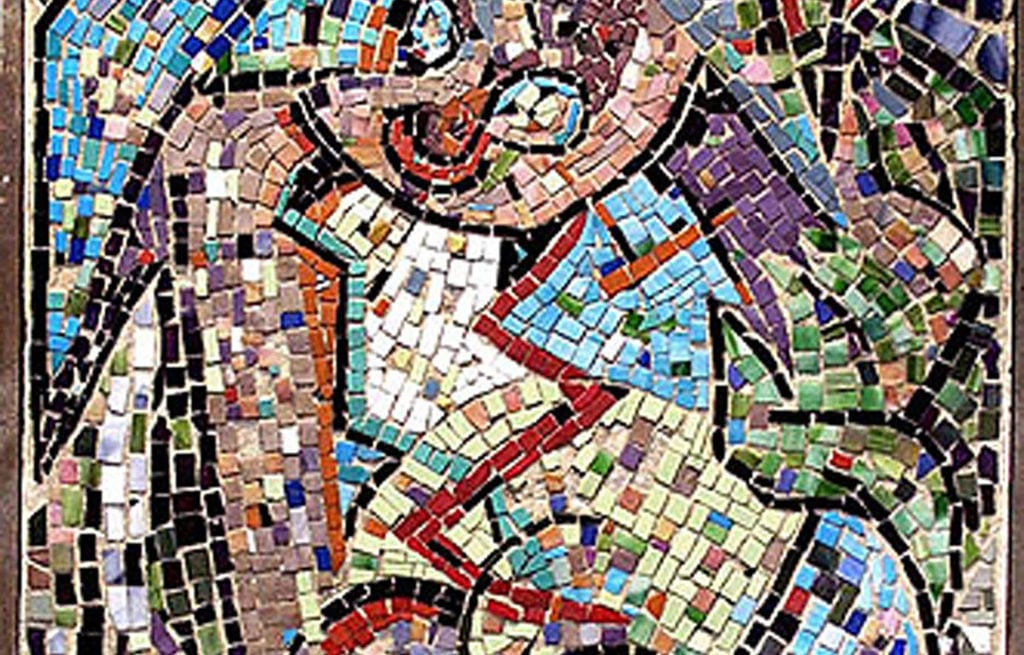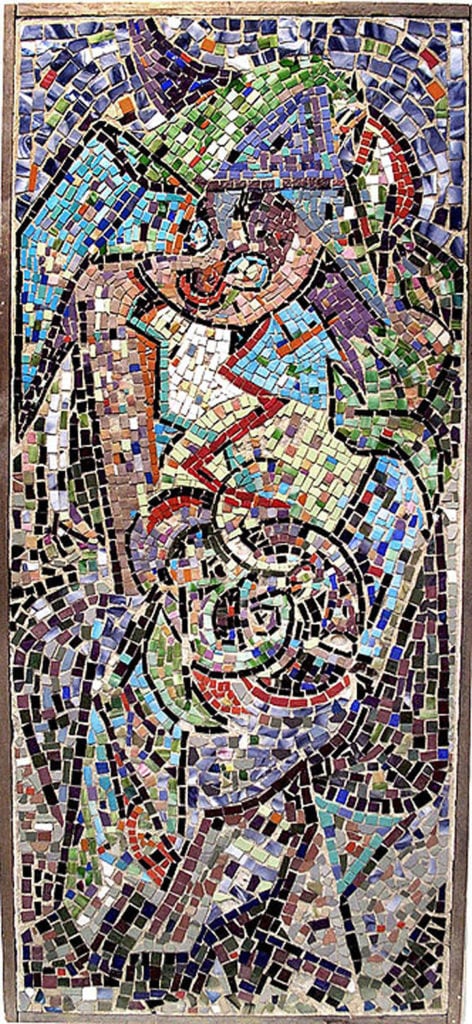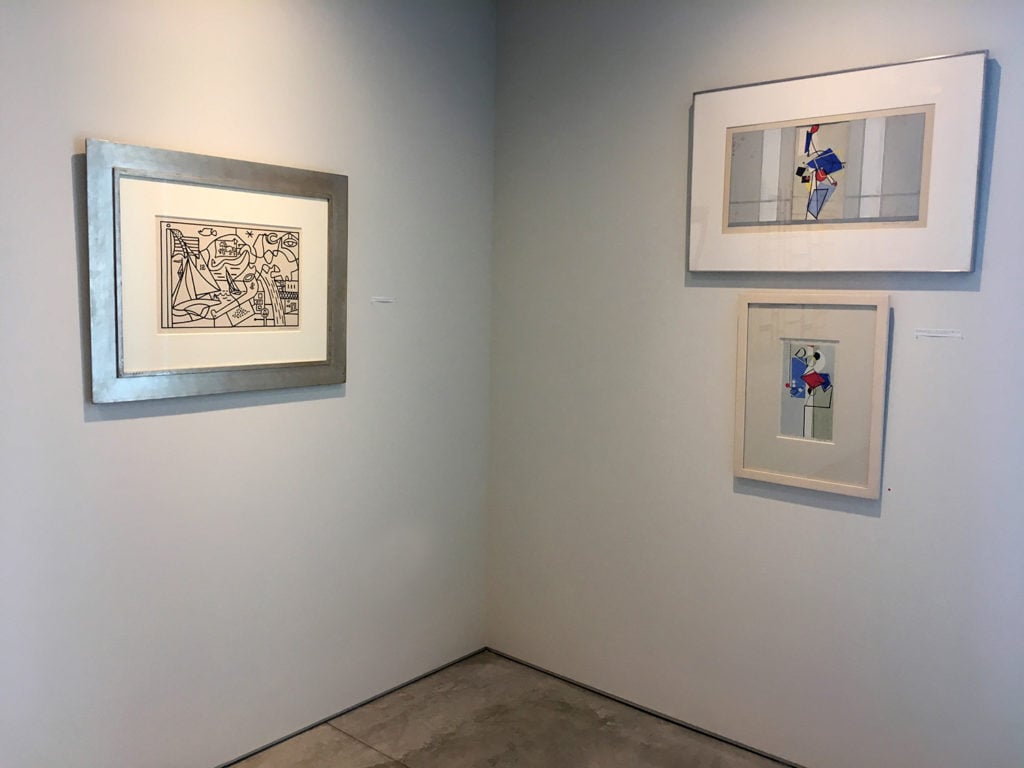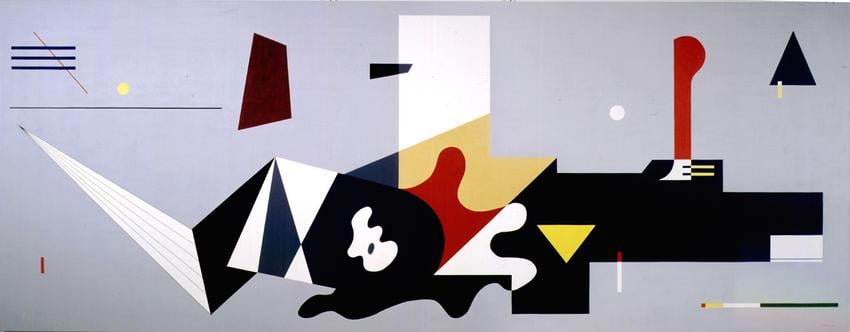On View
Jackson Pollock Made Exactly One Mosaic in His Lifetime—and Now It’s on Public View
In an exhibition of work created by abstract artists for the WPA, Washburn Gallery highlights the only mosaic the artist ever made.

In an exhibition of work created by abstract artists for the WPA, Washburn Gallery highlights the only mosaic the artist ever made.

Sarah Cascone

In the late 1930s, long before he developed his pioneering drip paintings, Jackson Pollock made a single, solitary mosaic. That work, created for the Works Progress Administration (WPA) Federal Art Project, is currently on view in the inaugural Chelsea exhibition at New York’s Washburn Gallery, which moved this month after 25 years on 57th Street.
“It was rejected by the WPA,” Joan Washburn, who founded the gallery in 1971, told artnet News at the exhibition opening. “It was the only mosaic Pollock ever did.”

Jackson Pollock’s only mosaic, Untitled CR1048 (c. 1938-41), created for and rejected by the WPA. Courtesy of Washburn Gallery/Pollock-Krasner Foundation/Artists Rights Society (ARS) Image.
The piece stands four and a half feet tall, a vaguely Cubist looking composition featuring a variety of bright colors. As far as Washburn knows, there is no record indicating why the WPA turned it down.
Between 1935 and 1943, the government agency was responsible for commissioning murals, sculptures, posters, photography, and other artworks from over 5,000 American artists. That massive undertaking, paired with the Trump administration’s recent—and so far unfulfilled—threats to defund the National Endowment for the Arts, inspired the current exhibition.
Pollock was just one of the now-famous artists who, struggling to make ends meet during the Depression, were employed by the government as part of President Franklin Delano Roosevelt’s New Deal. Washburn Gallery has brought together a selection of works created for the WPA by such greats as Philip Guston, Stuart Davis, and Lee Krasner.

Installation view of “The WPA” at Washburn Gallery with Stuart Davis’s study for Men Without Women at Radio City Music Hall (1932) at left and Lee Krasner’s studies for a mural for the WNYC offices (1941) at right. Courtesy of Washburn Gallery.
According to Washburn, these artists wouldn’t have survived without assistance from the WPA. “There was desperate poverty in those times, for everybody, not just artists,” she said. “Most of the artists involved were easel painters that you think of [their work] as sitting in post offices.”
But the WPA also played an important role in helping those who would go on to found the Abstract Expressionist movement. This was largely due to artist Burgoyne Diller, head of the Federal Art Project’s mural division, who made a point to highlight abstract art.

Ilya Bolotowsky’s Mural for Williamsburg Housing Project (1980) full-scale reconstruction. Courtesy of Washburn Gallery.
Taking center stage at Washburn is one such work, a 17-foot-long mural by Ilya Bolotowsky. Painted for the Williamsburg Housing Project, this full-scale reconstruction was created by the artist in 1980, when he believed the original had been destroyed. (A massive restoration project in 1988 uncovered the original work, along with several other abstract Williamsburg murals, beneath layers of dirt and paint.)
Diller “was totally dedicated to promoting abstract style in murals before abstract art was accepted in the US,” said Bolotowsky in a 1974 interview for the Solomon R. Guggenheim Foundation. “I don’t think people realize that at that time Diller was instrumental in something historical.”

Installation view of “The WPA” at Washburn Gallery with Jackson Pollock’s only mosaic at left and Ilya Bolotowsky’s recreation of his Williamsburg Housing Project mural at right. Courtesy of Washburn Gallery.
Many of the other works in the show are studies for WPA projects. Some, like Krasner’s piece, a small gouache and pencil work, were never realized.
“She was commissioned to create a mural for the offices at WNYC but the war broke out, and all of the artists were moved into the war effort,” said Washburn. “Diller went into the Navy and was the oldest naval officers. Ellsworth Kelly did camouflage—they commandeered everybody!”
“The WPA” is on view at Washburn Gallery, 177 Tenth Avenue, September 14–October 28, 2017.